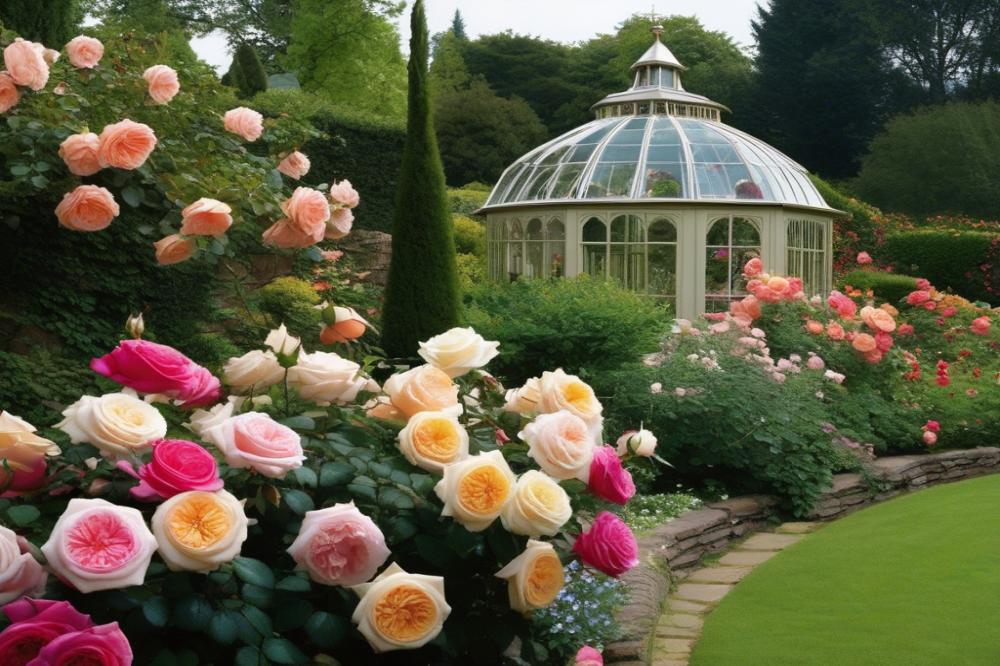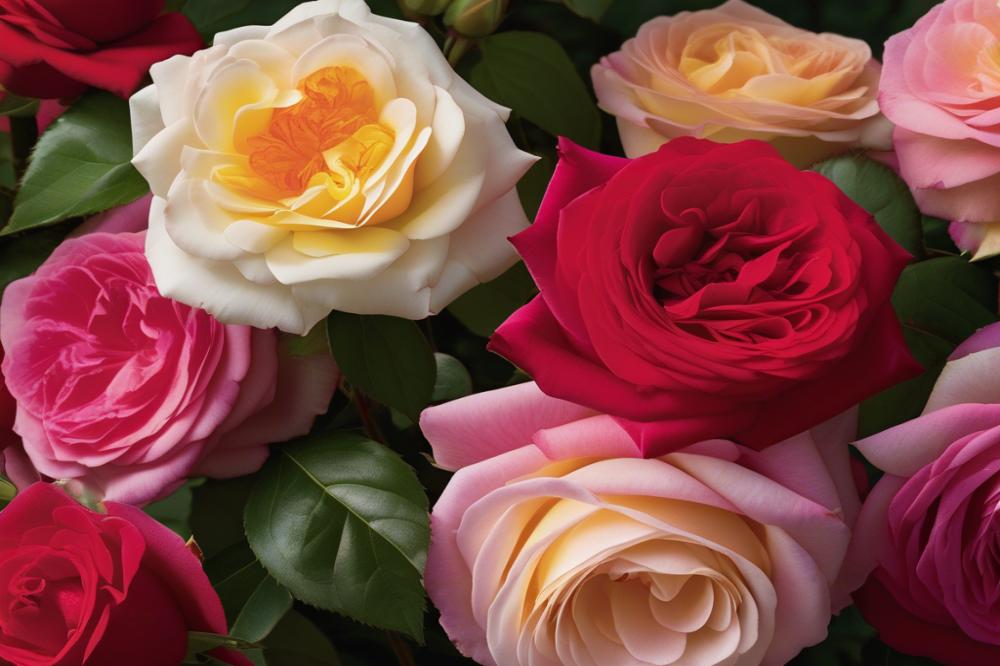Introduction
heritage roses are more than just flowers; they represent a vibrant piece of history and a connection to the past. These plants have been cherished for their beauty, resilience, and remarkable floral fragrance. In recent years, there has been a noticeable resurgence in their popularity among gardening enthusiasts. This movement towards heritage roses symbolizes a growing appreciation for heirloom plants that have stood the test of time.
Understanding the significance of these rose cultivars is crucial. Many were first cultivated hundreds of years ago, often linked to cultural traditions and historical gardens. As people increasingly explore plant history, the stories behind these roses attract attention. With such a rich background, they bring depth to any garden and ignite conversations among gardeners and visitors alike.
Heirloom plants play a vital role in promoting biodiversity. Many modern varieties may lack the characteristics that made earlier roses so beloved. By choosing heritage varieties, gardeners can contribute to sustainable gardening practices. Local nurseries are now responding to this trend by offering a wider selection of these cherished roses. Selecting the right plants is essential for beautiful displays and healthier ecosystems.
Through proper rose care, individuals can successfully grow these remarkable plants. This journey into gardening mirrors broader movements toward eco-friendly gardening and sustainable practices. A return to heritage roses not only beautifies environments but encourages a deeper appreciation for history and nature alike. The roses comeback reflects a desire to reconnect with traditional gardening while embracing ecological awareness.
Heritage Roses Defined

Heritage roses are old rose varieties that have stood the test of time. These are heirloom plants, often passed down through generations. Characteristics that set them apart include their stunning beauty and rich history. Many gardeners appreciate their resilience and natural growing habits.
Rose cultivars differ significantly from modern hybrids. While hybrids often focus on uniformity and disease resistance, heritage varieties bring diverse traits to the table. They display a range of colors, shapes, and sizes that modern roses sometimes lack. Furthermore, these older varieties often thrive without extensive care or artificial enhancements.
Another appealing aspect of heritage roses is their floral fragrance. Many of these plants possess rich, strong scents that evoke a sense of nostalgia. Unlike many modern hybrids, which have been bred for appearance over aroma, older varieties often captivate with their delightful perfumes. This emphasis on scent can enhance the gardening experience, making it a more enjoyable and fulfilling endeavor.
Understanding plant history is essential for appreciating these flowers. Many local nurseries are now focusing on sustainable gardening practices. They promote biodiversity by encouraging the growth of heritage roses alongside other heirloom plants. This approach not only supports pollinators but provides gardeners with a more eco-friendly way to enjoy their space.
Rose care for heritage varieties can vary. However, they generally require less attention compared to modern types. When growing these plants, gardeners often find themselves more connected to nature. The experience of nurturing these older varieties fosters a deeper appreciation for gardening as a whole.
The Role of Biodiversity

Biodiversity plays a vital role in gardening. It creates healthier ecosystems and supports a variety of life. Various plant species help maintain soil quality, water retention, and resilience against pests. Gardens filled with diverse plant life often attract pollinators, which are essential for many blooms, including roses.
Heirloom plants offer significant benefits to gardeners. Not only do they come with rich plant history, but they also exhibit unique traits that newer hybrids often lack. By planting these varieties, such as old rose cultivars, gardeners can contribute to preserving genetic diversity. This includes maintaining different colors, sizes, and fragrances that can be lost in modern gardening trends.
Local nurseries increasingly recognize the significance of heirloom choices. They provide options that promote sustainable gardening practices. Cultivating these plants fosters a deeper understanding of local ecosystems. Gardens filled with a mix of species help create mini habitats that support wildlife.
Eco-friendly gardening has become more popular in recent years. It emphasizes environmental health while allowing for beauty in gardens. By nurturing diverse plants, one can reduce the need for chemical treatments. This method also enhances the floral fragrance in the garden, creating a pleasant natural atmosphere.
Rose care often requires attention. Unlike their modern counterparts, heritage varieties are generally hardier and more adaptable to various conditions. Many gardeners appreciate the resilience and low-maintenance characteristics of these plants. Their strong roots can thrive in poor soils and withstand local weather variations.
Sustainable and Eco-Friendly Gardening

Heritage roses connect deeply with sustainable gardening practices. These heirloom plants not only add beauty but also contribute to biodiversity. Unlike many modern hybrids, older rose cultivars are often more resilient to diseases. Their sturdy nature means gardens can thrive with less chemical intervention. This trait supports healthier ecosystems overall.
Growing these roses also promotes eco-friendly gardening techniques. They require fewer resources than many contemporary varieties. For instance, heritage roses are typically drought-tolerant. This adaptation can significantly reduce water usage in gardens. Moreover, they offer an array of floral fragrance that attracts beneficial insects and pollinators.
Emphasizing local nurseries when sourcing these plants is crucial. Local suppliers can recommend varieties that thrive in the specific climate of the area. The history of these roses often includes adaptations to local conditions, making them ideal for sustainable gardening. Well-informed growers also share strategies for rose care that minimize the need for synthetic fertilizers and pest controls.
Companion planting is another useful technique in caring for these roses. Certain plants can enhance growth and deter pests naturally, reducing reliance on chemicals. Additionally, using organic mulch can improve soil health while conserving moisture. Sustainable gardening methods not only support your garden’s health but also nurture the broader environment.
In summary, incorporating heritage roses creates a harmonious balance between beauty and ecological responsibility. As more people become aware of plant history, these roses find their place in modern gardens. The increasing interest in heirloom plants signals a shift toward gardening practices that honor the earth.
Growing Heritage Roses

Cultivating heirloom plants like heritage roses can be a rewarding experience for gardeners. Proper care techniques help these beautiful blooms thrive. Start by selecting a suitable site that receives at least six hours of sunlight daily. Good soil drainage is essential to prevent root rot. Mixing in compost can improve soil quality and promote healthy growth.
When it comes to local nurseries, many specialize in various rose cultivars. Look for shops that focus on biodiversity and sustainability. These nurseries often provide a range of heirloom varieties, along with expert advice on plant history and care instructions. Spend some time researching their offerings. It’s helpful to visit nurseries and talk to knowledgeable staff about your gardening goals.
Visitors may encounter challenges while tending to roses. Common issues include pests such as aphids and diseases like black spot. Regularly inspecting plants for signs of trouble can help catch problems early. Consider using organic solutions to maintain an eco-friendly gardening approach. For example, a soap spray can deter pests without harming the environment.
Watering is another important aspect of rose care. Deep, infrequent watering encourages strong root development. Choose mornings for irrigation, which reduces evaporation and fungal problems. Additionally, applying a layer of mulch helps retain moisture and suppress weeds. This method creates a healthier growing environment.
In addition, understanding your climate zone is vital for successful growth. Some varieties may flourish in warmer conditions, while others thrive in cooler areas. Adjust your care practices based on seasonal challenges. This knowledge will enhance your gardening experience and support sustainable practices as well.
Finally, don’t forget the joy of floral fragrance. Heritage roses are celebrated not just for their beauty but also their delightful scents. Engaging with fellow gardeners can offer new insights and techniques. Consider joining local gardening clubs or online forums focused on plant care.
Plant History and Cultural Significance
Heritage roses possess a rich history that spans centuries. They often represent specific cultures and moments in time. Many of these heirloom plants have been cultivated and cherished for their exceptional beauty and resilience. Some rose cultivars were treasured by ancient civilizations, serving as symbols of love, beauty, and honor. The lasting appeal of these flowers is not just in their looks but in the stories they tell.
Cultural traditions are intertwined with the cultivation of these roses. For example, the beloved ‘Old Blush’ rose, first brought to Europe from China in the 18th century, became a favorite among gardeners due to its romantic scent and pale pink blooms. This particular cultivar not only had a significant impact on rose breeding but also influenced poetry and art during its peak popularity. Other rose varieties, like the ‘Damask’, have deep ties to historical events and symbolize specific emotions across various cultures.
Today, interest in these ancient flowers is experiencing a revival among gardening enthusiasts. Many individuals are seeking to embrace sustainable gardening practices, which often include the planting of biodiversity-friendly species. Local nurseries are now stocking more heirloom varieties, enabling gardeners to access the history and beauty of roses that have sometimes been forgotten. This trend is much appreciated, as it promotes eco-friendly gardening too.
Rose care guidelines for heritage varieties can be quite different from those of modern hybrids. Gardeners often admire the hardiness of these older cultivars; they do not require as much chemical intervention for pest control. Maintaining them is simpler, allowing for a more natural gardening experience. Floral fragrance is another reason why gardeners are drawn to these roses. Many older varieties possess scents that are far richer than their contemporary counterparts.
In summary, the story of roses goes beyond petals and thorns; it encapsulates history, culture, and a movement towards more sustainable gardening practices. Embracing these plants connects gardeners with their roots and honors the rich legacy they represent.
Reflections on the Return of Timeless Roses
Heritage roses are enjoying renewed interest for several compelling reasons. Often praised for their rich histories, these flowers bring stories and memories to our gardens. Their resilience in various climates appeals to many gardeners looking for easy-care options. Additionally, the unique fragrances these blooms offer stand in stark contrast to many modern roses that lack a strong scent.
People are increasingly drawn to the charm of heirloom plants for their beauty and connection to the past. They want to create vibrant spaces that tell a story, connecting generations. The role these plants play in preserving biodiversity also highlights their importance in any garden. As more individuals embrace eco-friendly practices, these classics fit perfectly into sustainable gardening methods.
Exploring neglected varieties can be a rewarding experience. Numerous types remain underappreciated, waiting for someone to cultivate them. Venturing into the world of these roses can inspire creativity and appreciation for nature’s diversity. It provides an opportunity for both seasoned gardeners and novices to expand their knowledge and aesthetic tastes.
In closing, preserving plant history and enhancing biodiversity is crucial for future generations. By incorporating heirloom varieties into home gardens, we can honor the past while nurturing our environment. Taking part in this revival not only enriches our own lives but also creates a lasting legacy for the planet. Let’s embrace this trend together and celebrate the timeless beauty that heritage roses bring to life.



